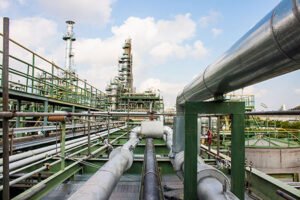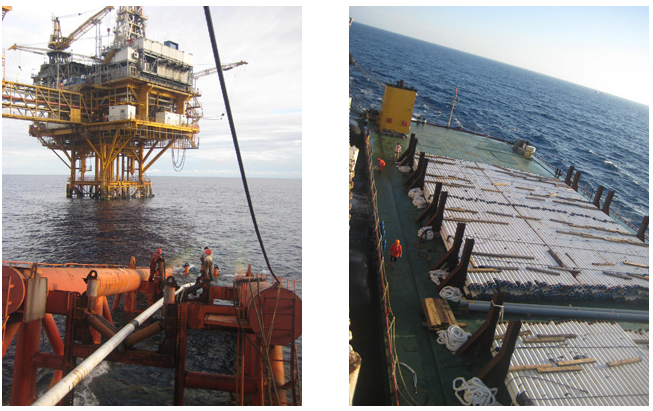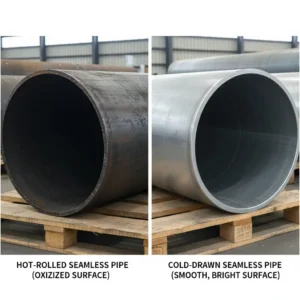
What is ERW Pipe? The Complete Guide from a Factory Perspective
By understanding the manufacturing process, standards, and applications of ERW steel pipes, you can save your project from high costs without compromising on quality.
CRA (corrosion-resistant alloy) clad pipe and lined pipe are applied for the anti-corrosion environment, and they have been considered as a new material in the oil and gas pipeline systems. Since they are two kinds of steel material that composite together through bonding processes. (Inner pipe material with expensive stainless 316L or alloy steel Inconel 625, which we call CRA layer. Outer pipe with carbon steel pipe that standards in API 5L or ASTM A106/A53, ASTM A333 Grade 6, etc.)
Clad and lined pipes are specialized types of pipes designed to enhance corrosion resistance and improve performance in various applications.
CRA refers to corrosion-resistant alloy. The CRA Clad and Lined Steel Pipe is composed of conventional carbon steel or low alloy steel pipes and a corrosion-resistant alloy layer. The CRA layer is metallurgically cladding to the internal or external surface of the steel pipe. Carbon steel or low-alloy steel pipe is called lining steel.
Inner CRA layer (0.25~6.0mm) normally such as Stainless steel, Duplex, Nickel alloy, Titanium, Hastelloy, Monel, etc. which are suitable for high corrosion environment.
CRA Clad Pipe consists of two main components:
Base Material: A conventional carbon steel or low alloy steel pipe, also called backing steel.
CRA Layer: A corrosion-resistant alloy layer metallurgically bonded to the internal (and sometimes external) surface of the steel pipe.
Clad and lined pipes are specialized types of pipes designed to enhance corrosion resistance and improve performance in various applications.
Definition: Clad pipes are made by bonding a layer of corrosion-resistant material (such as stainless steel) to a carbon steel pipe. This combination provides the strength of carbon steel with the corrosion resistance of the outer layer.
Applications: Commonly used in industries like oil and gas, chemical processing, and power generation, where exposure to corrosive environments is a concern.
Definition: Lined pipes have a protective lining (often made of materials like PTFE, rubber, or other polymers) applied to the inner surface of the pipe. This lining acts as a barrier against corrosive substances.
Applications: Frequently used in applications involving the transport of aggressive chemicals, slurries, or other materials that could damage the pipe’s interior.
Specification of CRA Cladding Pipe |
|
| Bare Pipe | Seamless pipes and welded pipes |
| Standard of Bare Pipe | API5L,ASTMA106,ASTMA333 ,ASTMA335, etc |
| CRA Material | stainless steel and non-ferrous alloys: SS 304, SS 316, SS 317, duplex, alloy 254, SMO 904, Incoloy alloy 825, Inconel alloy 625, Hastelloy C-276, Inconel alloy 59, alloy 31, AL6NX, alloy 20, Monel 400, titanium, aluminum and some copper alloys |
| Standard of CRA Material | ASTMA240,A263,A264 ,A265,B898,B424,B443,B619,B622,B675,B265,B551 |
| Standard of CRA Cladding Pipe | API5LD |
Base materials of the CRA clad steel pipes include seamless or welded line pipes of API, ASTM, etc.
The CRA cladding or lining material covers an extensive range of stainless steels and nonferrous alloys. SS 304, SS 316, SS 317, Duplex, Alloy 254 SMO 904, Incoloy alloy 825, Inconel alloy 625, Hastelloy C-276, Inconel alloy 59, Alloy 31, AL6NX, Alloy 20, Monel alloy 400, Titanium, Zirconium, and some copper alloys.
Generally, CRA-clad pipes shall be manufactured in accordance with API 5LD. The base material (steel pipe) conforms to API 5L, ASTM A106, ASTM A333, ASTM A335, etc. The cladding material shall conform to ASTM A240, A263, A264, A265, B898, B424, B443, B619, B622, B675, B265, B551.
CRA Clad Pipes are widely used in various industries:
oil and gas industry,
Shipbuilding,
chemical plants,
power plants, and so on.
That’s because the CRA layer not only enhances the corrosion resistance of the pipeline but also reduces the cost to a minimum.

When you choose to contact us, you will love our service
No matter you have rich experience of importing or new in this industry, our team will try the best to make your purchase of steel pipes fast and efficient.
All staff are7x 24 hours online and all your inquiries will be replied within 2 hours.
common size of steel pipes are in stock more than 800 tons, CIF orders will book stand-on vessel first.
Test report, certificates, CO and all customs clearance documents will be replied in time.

By understanding the manufacturing process, standards, and applications of ERW steel pipes, you can save your project from high costs without compromising on quality.

The difference between ASTM A333 steel pipe and ASTM A106 steel pipe is that ASTM A333 is a low-temperature carbon steel pipe that can be used as a structural pipe, while ASTM A106 is a non-structural carbon pipe that is used in high-temperature applications.

Carbon steel pipe/ tube, also called CS pipe, are widely used in heavy industries like infrastructure, shipping, stills, mineral, oil, gas, and fertilizer industry pipeline systems.

Hot rolled seamless pipe is processed at high temperatures, resulting in a rougher surface and looser tolerances but lower cost. Cold drawn seamless pipe undergoes further processing at room temperature, delivering tighter tolerances, higher strength, and a smooth finish, though at a higher price point.
We will contact you within 2 hours, please pay attention to the email with the suffix “@jsfittings.com” or “@chinajsgj.com”.

Need help? Our team is just a message away